Feb 2020 2nd edition
Feb 2020 2nd edition Joy
Translations
A stutter needn't be a stumbling block
A stutter needn't be a stumbling block SiboneloToo many people battle with stuttering without knowing that therapy can improve their speech.
A speech-language pathologist at Moses Kotane Hospital in the North West, Gaopalelwe Mogatusi, defines stuttering as a fluency disorder that results in an interruption in the flow of speech.
The disorder is characterised by the repetition of sounds, blocks (no sound is produced), interjections (extra words, such as ‘um’) and prolongations (stretching out a sound for a long time).
Mogatusi said if stuttering impedes your daily activities, such as the ability to communicate or speak with people at work or school, then it is considered a disability.
Adults are harder to treat, she says, so the disorder is best addressed in childhood.
According to Mogatusi, stuttering causes anxiety in most individuals. People who stutter might have low self-esteem or low-confidence in speaking publicly or in large groups.
For instance, children who stutter are usually withdrawn in classrooms and avoid speaking. “This causes feelings of embarrassment and shame.” Parents usually realise that their children stutter from the age of two because that’s when most children start to use language.
“This type of stutter is called normal non-fluency and children can outgrow it. "However, when a child aged between four and six stutters and it lasts for more than six months, it is recommended that a speech-language pathologist or speech therapist be consulted,” says Mogatusi.
What causes stuttering?
Stuttering can be acquired or hereditary. Acquired stuttering is caused by brain trauma or brain injury to the part of the brain that controls speech, whereas hereditary stuttering is passed down from parents or grandparents.
Where to go for therapy
Mogatusi said both private and public healthcare professionals can provide treatment to people who stutter. Treatment involves speech modification strategies which focus on changing the timing, tension and production of speech.
Whether a stutter can be reduced completely depends on:
- the severity of the stutter
- how early therapy is started
- how committed an individual is to therapy.
“In my profession, I have seen people who have overcome their stutter and managed it really well.”
She says the good news is that government hospitals now have specialised services such as speech therapy, available to the public for free.
People seeking therapy must visit their local clinic where a doctor or nurse will write a referral letter to a hospital. The patient must then present the letter to a hospital where a speech therapist is based. The speech therapist will conduct a fluency assessment to determine the severity of the stutter, which will guide treatment goals for the individual.
Tips for parents
Mogatusi encouraged parents to acknowledge when their children stutter and provide emotional support to minimise the likelihood of them developing negative reactions.
“If a child is younger than four and a parent notices signs of stuttering, they should not correct the non-fluency as it might be a normal non-fluency. Correcting the child might draw the child’s attention to non-fluency and aggravate it into disfluency,” she explained.
Teachers should learn more about stuttering and help reduce the stigma attached to it.
Tips for teachers to support children who stutter:
- Address bullying and teasing; classmates should be educated about stuttering and how to treat a person who stutters.
- Practice oral presentations with the student before class presentations, to boost the student’s confidence.
- Do not rush lessons because time pressure makes it harder to talk smoothly.
- Do not react negatively when the student stutters in class by, for example, getting irritated, annoyed or punishing the student for not speaking properly.
- Do not speak on behalf of the child or interrupt him/her when they are speaking.
- Always advise parents of students who stutter to see a speech therapist.
Did you know
You can find out from your nearest clinic which hospital in your area has a speech therapist and ask for a referral letter in order to receive therapy.
Amber Alert launched in SA
Amber Alert launched in SA angenithaThe new Amber Alert system that was recently launched by the South African Police Service (SAPS), in partnership with Facebook, will be instrumental in the police’s gender-based violence (GBV) strategy.
This is according to the National Commissioner of the South African Police Service, General Khehla Sitole.
Amber Alert enables Facebook users to assist the police in finding missing children.
“The prevention of the kidnapping and abduction of our children for various purposes, including sexual offences, parental disputes or human trafficking, requires the moralisation of South Africans and involvement of all role players,” General Sitole says.
He thanked South Africans for supporting the new system, which now forms part of the SAPS’s online policing strategy.
“So far, we have received over 1 400 tip-offs from community members and we have been able to make four arrests, while investigations into the other cases are continuing.”
Through Facebook’s newsfeed, Amber Alert enables people to instantly share important information about the missing child and suspected abductor, such as a photo, hair colour and clothing.
Facebook’s Director of Trust and Safety Emily Vacher said the system is able to reach a large number of Facebook users who might be in a better position to help find the missing child.
She said one of the most important things that are needed when reporting a missing child is a recent photo of the child, which will be prominently displayed in the newsfeed of people in the search area.
How Amber Alerts work
The decision to declare an Amber Alert is made by the SAPS when investigating a suspected child abduction case.
Once the SAPS has been notified about an abducted child, it must determine if the case meets its Amber Alert criteria, which includes:
The abducted child is 17 or younger.
There is a reasonable belief that the child has been abducted.
The police believe the child is in danger of serious bodily harm.
There is enough descriptive information about the suspected abduction for law enforcement to issue an Amber Alert.
Why is it called Amber Alert?
Amber Alert originated in the United States in 1996 after nine-year-old Amber Rene Hagerman was abducted while riding her bike. Sadly, Amber’s body was found two days later. Subsequently, the media partnered with local police to develop a rapid-response system to help find abducted children.
Be switched on and switch off
Be switched on and switch off tsoanaThere are various things that South Africans can do to save electricity and avoid load-shedding.
The Acting Station Manager of Eskom’s Matimba Power Station Obakeng Mabotja says the lack of sufficient power in South Africa impacts people’s lives because normal activities cannot happen during load-shedding.
Matimba Power Station is situated in Lephalale, Limpopo.
Mabotja explained that load-shedding occurs when Eskom is unable to produce enough electricity to meet the country’s demand. It is therefore essential that all South Africans do their bit to use less  power.
power.
Tips to use less electricity:
- Switch off lights when leaving a room
- Use LED bulbs
- Turn off appliances when they are not in use
- Only use cold water, unless necessary
- Use a thermal blanket to cover your geyser.
Several factors can hamper power production, including maintenance, unplanned shutdowns and, critically, the weather.
Mabotja said that her Matimba, in particular, is affected by high weather temperatures.
“On very hot days, the station is unable to produce power to its full capacity,” she said.
The Matimba Power Station uses coal to produce electricity, and it is designed to generate 3990 MW.
“Power is distributed via a distribution substation. It travels along high-voltage transmission lines and passes through step-down transformers to lower the voltage.
Electricity is then transmitted to the national grid.”
The power station’s coal comes from Exxaro’s Grootegeluk mine. It is transported via a conveyor system to Matimba’s silos and bunkers, before going to the mills where it is crushed and converted into electricity, said Mabotja.
Building a nation that cares for children
Building a nation that cares for children angenithaUnion Buildings

There is a proverb common to many African cultures which says that it takes a village to raise a child. This idea – that the broader community has a responsibility for the development, well-being and safety of each child – comes to mind when I think about the tragic and deeply upsetting death of 13-year-old Enock Mpianzi on a school camp recently.
Sadly, Enock is not the only child to lose his life for reasons that were entirely preventable, if only adults had exercised due care and responsibility. One thinks of another 13-year-old, Keamohetswe Shaun Seboko, who recently drowned in the swimming pool of a Magaliesburg primary school, and the two children who died at the Lekgolo Primary School in Limpopo when a truck crashed into a wall that collapsed on them.
One thinks also about the many children, like 6-year-old Nathlia Pienaar, who are killed in the crossfire of gang wars on the Cape Flats. We remember also the tragic deaths of Michael Komape and Lumka Mkethwa, both of whom died after falling into pit latrines.
All of those young lives, and the lives of many others, need never have been lost. All these tragedies could have been prevented if measures had been taken to keep these children out of harm’s way.
It seems to me that, as a society, we are failing our children.
Too many children find themselves in dangerous situations, whether it is on a makeshift raft on a river or being left alone in a shack with a paraffin lamp. When contractors leave excavations unprotected or school infrastructure is not maintained or school transport is overcrowded, the lives of children are put at risk.
But there is more than negligence and neglect at work. Many children are targeted by sexual predators, criminal gangs and drug sellers precisely because they are vulnerable. As a society, we need to be more diligent and more active in protecting our children from these and other dangers.
As a society, we need to build a culture of responsibility.
We need to be responsible for ourselves, for our children and for others. Just as we need to ensure that children are able to grow up in a safe, nurturing and stimulating environment, so too must we feel a duty to protect and care for all those who we know and interact with.
We must feel this duty of care on the road. While we welcome the drop in road fatalities over this festive season, the grim reality is that over 1,600 people died on our roads in just a month and a half. It is disturbing that over 9,000 motorists were arrested for offences including drunk driving, speeding, and reckless and negligent driving. A culture of responsibility means that we should all drive safely and respect the rights of pedestrians and other road users.
A culture of responsibility means that fathers need to be present in the lives of their children. Too many women have to raise children on their own, which often limits their prospects and those of their children.
A culture of responsibility also means that we should practice safe sex and not expose ourselves or others to HIV. We should not abuse alcohol or use drugs. We should seek to live healthy lives so that we avoid diseases that are largely preventable and live longer lives.
Such a culture should be embraced in particular by all those in society who occupy positions of authority and influence, whether they are religious leaders or politicians, traditional leaders or celebrities. Through their words and actions, they should seek to build a better society in which all are appreciated and cared for.
Elected officials and public servants are entrusted with the responsibility to ensure the safety and well-being of citizens. They must ensure that there is adequate and safe infrastructure in schools. They must act quickly when there is an interruption to water supply in a communities or when faulty streetlights are reported. They must ensure that health and safety regulations are enforced and that the rule of law is maintained.
In addition to the ongoing work that is taking place across government, at all levels, to give effect to this responsibility, we have sometimes had to take extraordinary measures. In response to the deaths and injury caused by children falling into pit latrines, we launched the SAFE initiative to accelerate the provision of appropriate toilets to all schools in the country. We deployed the South African National Defence Force to parts of Cape Town to support the police in their efforts to reduce gang violence. More recently, we have, together with civil society, embarked on an emergency response plan to end violence against women and children.
Yet, there is clearly much more that we need to do, as government and as a society.
We applaud those individuals and organisations who have taken upon themselves responsibility for the well-being of others. There are people like Ralph Bouwers and Mark Nicholson, who organise recreation activities for young people in Lavender Hill in Cape Town to keep them from turning to gangsterism. There are the mothers, sisters and daughters who work as student volunteers with Operation Bobbi Bear, an organisation in Amanzimtoti in KwaZulu-Natal that offers shelter to young children who have been abused.
There are many faith-based groups like the Southern African Catholic Bishops’ Conference, who I met recently who told me about the work they are doing to respond to the needs of the poor, to support families to be more caring and nurturing and to assist young people in confronting the many challenges before them.
These South Africans are showing us the way. Through their example, they are reminding us of what it means to take responsibility for ourselves and for others.
This country has witnessed far too many tragedies. Too many young lives have been lost, too many children hurt and traumatised.
We can bring these tragedies to an end if we all, each one of us, take responsibility for raising the children in our great South African village.
Crafters reach for the stars in the Northern Cape
Crafters reach for the stars in the Northern Cape UrsulaClever craftsmen are being taught how to use their talent to put bread on the table. 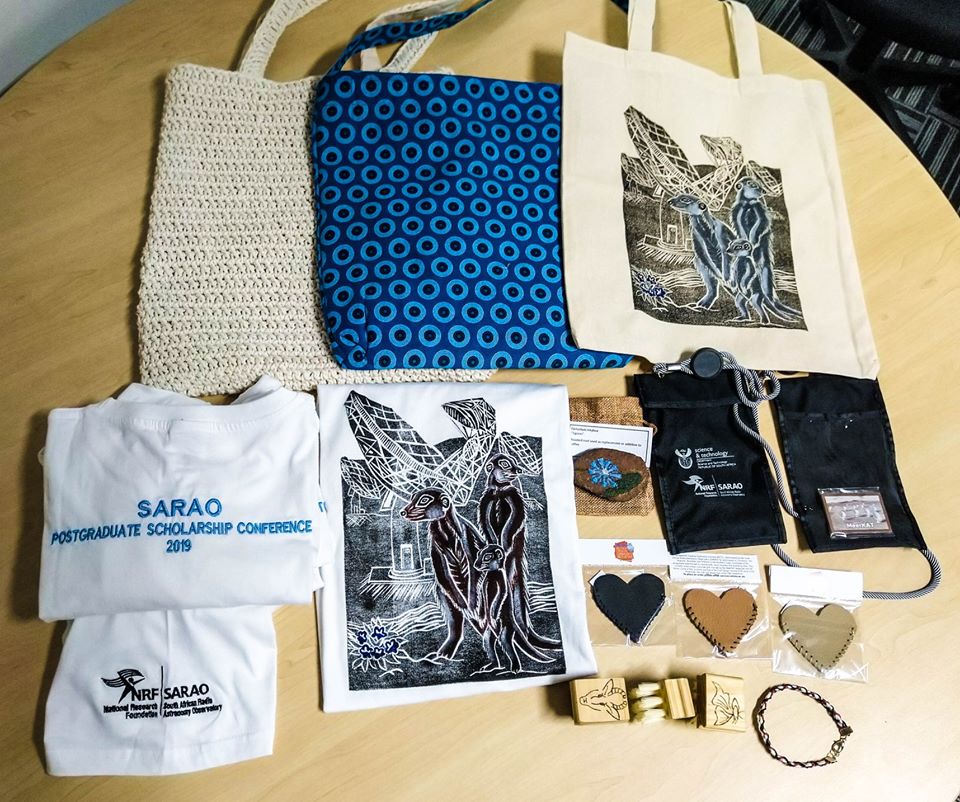
The landmark MeerKAT Radio Telescope project in the Northern Cape is creating hundreds of work opportunities for community members, and now local craft producers are being brought on board too.
In 2019, the Craft and Design Institute (CDI) completed the skills training of 19 up-and-coming crafters from the small rural towns of Carnarvon, Vanwyksvlei, Brandvlei and Williston. The project came about after the South African Radio Astronomy Observatory (SARAO), which runs the MeerKAT project, formed a creative community initiative with the crafters.
“The goal is to source craft-makers from disadvantaged backgrounds and under-resourced communities, provide them with creative skills training, as well as basic business and marketing skills,” explained CDI training manager Rosemary Cooke.
The six-month programme saw CDI running a series of workshops focused on design, creative skills training and developing quality products that are unique to the Karoo.
After the training, SARAO looked to give crafters the opportunity to sell their goods. The organisation took it upon itself to order R100 000 worth of products from 10 of the crafters, which were ordered for SARAO’s Bursary Conference in December 2019.
“The order included conference bags and various corporate gift items from the craft businesses. This is a further step towards empowering the businesses to start engaging with the market and getting their businesses into the mainstream of economic activity,” said Cooke.
One of the crafters, Maria Lackay, is the breadwinner of her family and creates household accessories and clothing. She said that CDI and SARAO helped her to access opportunities that she would never have been able to.
“I have never handled bulk orders, and the assistance I received from CDI helped a lot. SARAO is great and cares a lot for others, especially for those who want to be successful and who want to make the future brighter. I love this project!” said Lackay.
SARAO’s creative community initiative has also created a design brochure featuring each of the 19 crafters and their products.
*The CDI hosts a number of free workshops related to skills and business training in the crafts industry, mainly in the Western Cape. For more information, visit www.cdi.org.za or call 021 461 1488.
Diarrhoea can be fatal: Watch your kids!
Diarrhoea can be fatal: Watch your kids! tsoanaAn increase in diarrhoea cases, referred to as ‘surge season’, takes place between November and April annually, due to the warmer summer temperatures which promote the spread of germs.
This is according to the City of Cape Town’s Mayoral Committee Member for Community Services and Health, Councillor Zahid Badroodien, who stressed that children under the age of five are the most at risk of developing complications from this preventable disease.
Over the past decade, City Health and its partners have increased diarrhoea education and awareness initiatives and have introduced various measures at clinics and hospitals to fast-track medical attention for children who show symptoms of dehydration.
While two fatalities have already been reported during this surge season, the good news is that the season appears to be off to a slow start, Councillor Badroodien confirmed. He said figures show a 25 percent decline in the number of reported cases for the 2019/20 season, compared to 2018/19, and severe dehydration hospital admissions are down by 30 percent.
“We can only speculate about the drop in the caseload, but it is encouraging, particularly the drop in hospital admissions and the decline in dehydration cases.
“To date, temperatures have been reasonably mild, but this is likely to change in the coming months. We all need to be on alert for symptoms of diarrhoea in young children. We also need to ensure that our personal hygiene habits are geared towards preventing the spread of germs. Prevention is always better than cure,” said Councillor Badroodien.
He added that research has shown that hand washing is one of the most effective ways to prevent diarrhoea from spreading. “Please wash utensils and hands before eating. In the case of young children specifically, wash their bottles, bowls, spoons and teats before feeding them,” he said.
Diarrhoea is a viral infection. To ensure that children get the help that they need in time, parents and caregivers can lookout for various symptoms, including vomiting; loose, watery stools (runny stomach) and low energy.
Dehydration symptoms include;
- passing little urine
- dry mouth
- few tears when crying
- sunken eyes and
- weakness.
Severe dehydration can present with drowsiness, pale or mottled skin, cold hands or feet, dry nappies and fast and shallow breathing.
“Caregivers are advised to keep their children hydrated, by giving them rehydration solution, breast milk, thin soup or very thin porridge and to feed it to them a little bit at a time. However, if you’re unsure, play it safe and get the child to the nearest clinic as soon as possible, where a proper assessment can be made and appropriate action taken,” said Councillor Badroodien.
Early childhood education improves in Upington
Early childhood education improves in Upington tsoanaThe brains of preschool children grow at an incredible rate and help lay the foundations of language, thinking and social and emotional development.
Children from Upington in the Northern Cape are benefiting from 10 early childhood development (ECDs) centres recently launched by the Department of Social Development (DSD).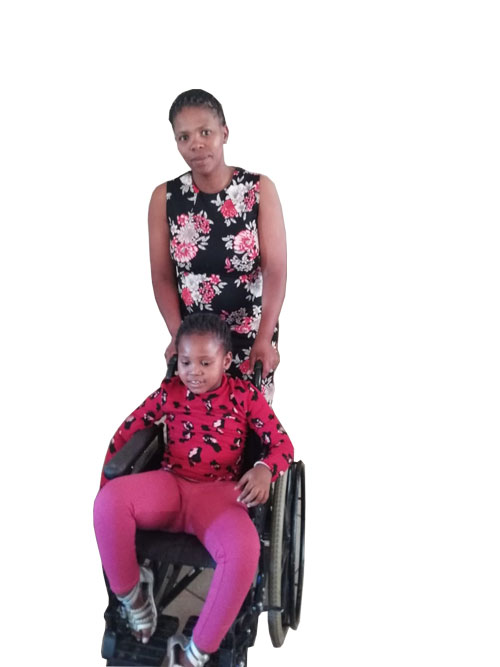
Five-year-old Lithemba Bacela, who lives with cerebral palsy and has a speech impairment, is better able to indicate what she feels and needs, thanks to her time at one of these centres, Oasis Skills Development Centre’s ECD unit.
Lithemba lives in Paballelo with her mother, Elizabeth Bacela, who says her child’s communication skills have improved since she started at the centre last year. Elizabeth said the stimulation area has been particularly beneficial.
“Lithemba can now indicate when she is thirsty, hungry or has wet herself.”
The Oasis ECD centre is one of 10 that received new buildings from the National Lotteries Commission (NLC) as part of the commission’s Legacy Project. This countrywide initiative is aligned with the National Development Plan’s commitment to improving education, innovation and training, and ensuring that all children have at least two years of preschool education.
The centre accommodates children who live with a variety of conditions, including autism, down syndrome, cerebral palsy and foetal alcohol syndrome. Each of the four classes at the ECD centre has 10 to 15 pupils, says Acting Chairperson of Oasis Skills Development Centre Marina Johannesen.
The department contributes a subsidy of R20 per child, which covers children between the ages of two and seven and those who are 18 years of age and above.
In 2015, the DSD donated a stimulation centre, computer lab and a bus to transport pupils to and from school.
“Once a week, therapists from the local hospital come to the centre to assess and treat the children,”says Johannesen. The new building, donated recently is an additional blessing for the centre. Speaking at the launch, Social Development Deputy Minister Hendrietta Bogopane-Zulu called on the public to include children living with disabilities in dialogues about issues that affect them.
Election brings relief to school in crisis
Election brings relief to school in crisis SiboneloElection Lethiba (25) is an everyday hero. He answered a local school’s call for help and fixed over 100 desks for them, despite there not being sufficient funds to adequately pay for his services.
A resident of Mohlaletse village in Sekhukhune, Limpopo, Lethiba was happy to step in and repair 135 desks at Fetakgomo High School – in a very short space of time – so that the village children would have decent work surfaces when the school year got under way.
The school did not have enough money, I took what they could offer and got the job done. Being able to help the school was a big deal for me” He added, that the support he receives from his community motivates him to be the best that he can be.
After a rocky few years, during which Lethiba suffered a number of setbacks, he seems to have found his way, thanks to his entrepreneurial spirit.
After dropping out of high school, he registered to study an electrical course but again dropped out because of financial challenges.
“I went back home and opened a barbershop,” he explained.
One day, while waiting for customers to walk in, he was playing with a piece of wire and in his mind’s eye, it took the shape of a chair. Lethiba had always been good with his hands and he was inspired to see where his talents as a craftsman could take him.
“I started saving money that I was making as a barber to buy carpentry equipment,” he said.
His first chair quickly sold to a neighbour and Lethiba was heartened that given the lack of local of carpenters in the area, he could make a go of his new venture.
He gradually learnt how to manufacture garden chairs, couches, wedding chairs and tables and soon his reputation as a furniture-maker spread. Although his business is still in its infancy and Lethiba still works from his parents’ home, his customer base is growing and he both hires out furniture for events and sells pieces to the public.
His next goal is to establish his own workshop and buy decent equipment.
First private clinic in Mamelodi
First private clinic in Mamelodi tsoanaRetirement has not dimmed the passion three nurses have for helping the ill.
Three seasoned nurses from Mamelodi East in Pretoria have joined forces to open a private clinic that provides healthcare services to locals after hours.
Mabu Sekhaolelo, Veronica Mogashoa and Paulinah Mafatshe are the co-founders of Wellness Today, which opened its doors in January. The clinic operates from 4pm to 7pm from Monday to Friday.
“We realised that working people are negatively affected by the 4pm closing time of local clinics,” Sekhaolelo explained.
Wellness Today is not in competition with government clinics; instead, it strives to complement them by reducing the burden of patients who flock to public clinics and end up in long queues, which sometimes results in them not being assisted before the clinics close at 4pm, she said.
Sekhaolelo said the clinic provides the same services that people get at a government clinic, including immunisation, HIV testing, family planning and other tests and screening, for which the patients are char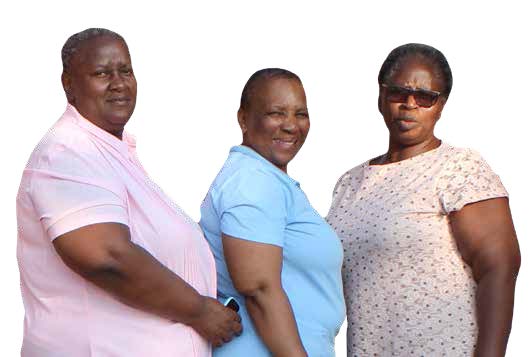 ged between R30 and R100, depending on the test needed.
ged between R30 and R100, depending on the test needed.
Mafatshe said they held several meetings to brainstorm how to get the clinic off the ground. It was not an easy process but nothing could stop them.
Explaining what it took to establish the clinic, Mogashoa said they first had to get a practice number from the Board of Healthcare Funders of South Africa, which issues practice numbers to all registered private healthcare providers.
Afterwards, they applied for an operating licence from the National Department of Health.
“Among the challenges we had, and still have, are land to build a medical centre and finances to buy more equipment and medication for our patients,” she said.
In the interim, the clinic operates from Mafatshe’s house.
Mogashoa said the clinic has been well received. “Most of our patients heard about us through word-of-mouth and the media,” she said.
“We apply the same nursing discipline and legal standards as those used by government clinics,” she added. “We are experienced nurses who have worked in the public healthcare environment for a long time and are passionate about our patients’ health.”
They said the most important advice they give to their patients is to ensure they understand their conditions and adhere to their medication regime.
Flame of opportunity burns bright for young people
Flame of opportunity burns bright for young people UrsulaEstablished by the Department of Environmental Affairs in 2003, Working on Fire (WoF) has grown into one of the flagship job creation programmes in South Africa. 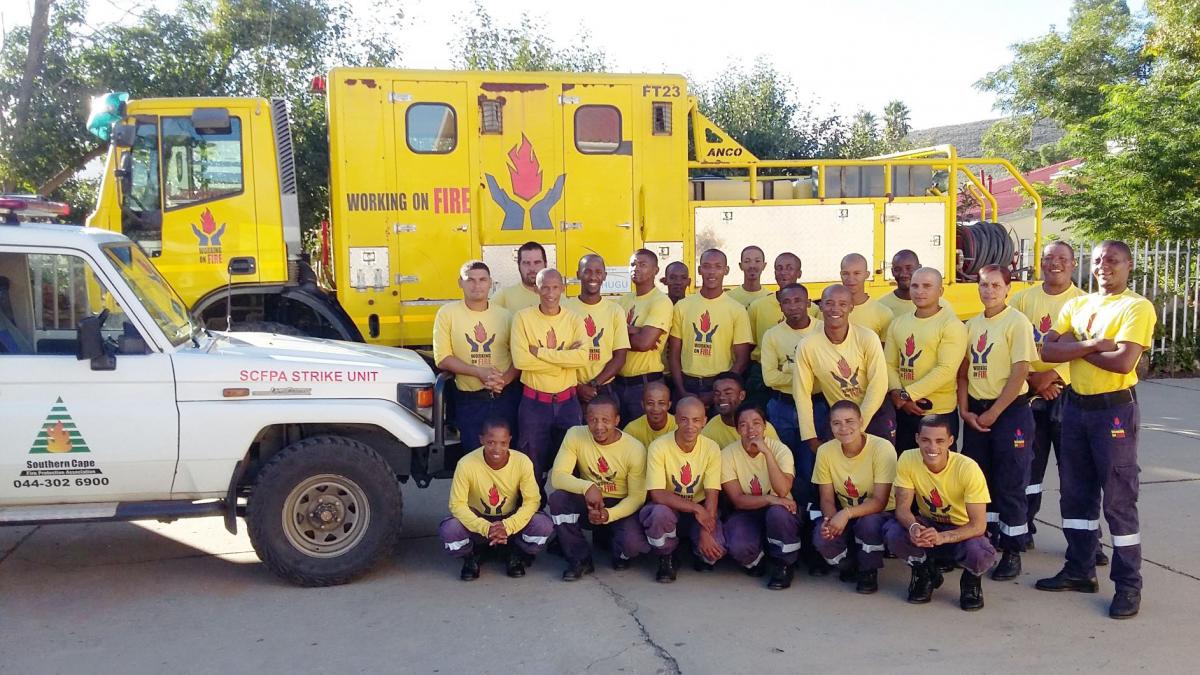
The organisation started with 850 firefighters and now has over 5 000 participants working from over 200 bases across the country. Of these participants, 94 percent are youth and 31 percent are women.
WoF’s impact spreads well beyond providing part-time jobs, believes Managing Director Trevor Abrahams.
“In the past 17 years WoF has served as a stepping stone for thousands of South African youth from disadvantaged areas. These youth have, through the WoF skills development project, secured permanent work opportunities in the South African Police Service, South African National Defence Force and nature conservation agencies, to name just a few,” he says. WoF participants are given the opportunity to grow within the programme, from firefighters to crew leaders and base managers to regional managers. They are also given the chance to undergo further training in fields such as finance, human resources, office administration, health and safety and communications.
Phumza Dyantyi, who grew up in a disadvantaged household in Keiskammahoek, has seen the impact of the programme in her life. She started as a firefighter and is today general manager of the Eastern Cape branch of the organisation.
“I first heard about WoF from our ward councillor. In 2004 I went for the interview to become a firefighter and I passed the selection test. Since then, it has been a life-changing journey.”
“WoF gave me the chance to study project management and finance. It trained me in various things, such as computer skills and negotiation skills, and later it even gave me the opportunity to attend the University of Cape Town to study operations management and compliance management.
“I was able to build a house for my children and one of my daughters has graduated from university, while the other is doing her first year, all thanks to WoF.”
For more information about WOF call:
- North West 087 352 4812
- Free State 051 4512365
- Western Cape 021 532 1516
- Limpopo 015 590 1530
- Gauteng 011 314 0254
- Mpumalanga 013 752 4172
- KwaZulu-Natal 033 330 7715
- Eastern Cape 043 555 0426
Furniture-maker nails it
Furniture-maker nails it SiboneloA Johannesburg man’s innovative furniture is gaining international success, thanks to government-supported initiatives aimed at young artisans.
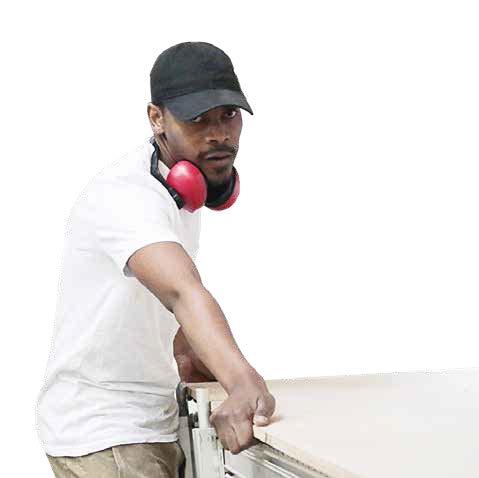 Sipho Twala is a young furniture-maker who has gone from being unemployed to showcasing his beautiful creations at national and international exhibitions.
Sipho Twala is a young furniture-maker who has gone from being unemployed to showcasing his beautiful creations at national and international exhibitions.
Twala is one of over
1 000 people who have been empowered to succeed through the Furniture Technology Centre Trust (Furntech).
Supported by the Small Enterprise Development Agency (Seda), Furntech offers support to existing and start-up businesses in the furniture industry. The organisation targets a number of groups to be a part of its programmes, including unemployed people with a passion for furniture or woodwork.
Eighty-eight percent of Furntech’s clients are black-owned companies. More than 710 SMMEs are currently supported and 310 businesses have been started from the incubation programme itself. Furntech has also trained almost 7 000 learners, while creating 2 000 direct and indirect jobs.
Twala is one of the entrepreneurs who have made strides. In 2014, he trained in wood-machining and cabinet-making through a project offered by the Gauteng Growth and Development Agency.
“At that stage, I was unemployed, but I always had a passion for woodwork and design. When I completed the training, I started a co-operative with four other youngsters, but it did not succeed,” said Twala.
He subsequently found employment in the furniture industry, working as a machinist and learning new skills.
 “My goal has always been to start and run my own business, but I did not have enough experience in the industry or the support I needed. In 2018 I started talks with the Furntech centre in Johannesburg. I was accepted into the incubation programme, I took a leap of faith and resigned from my job.”
“My goal has always been to start and run my own business, but I did not have enough experience in the industry or the support I needed. In 2018 I started talks with the Furntech centre in Johannesburg. I was accepted into the incubation programme, I took a leap of faith and resigned from my job.”
Being part of the programme gave Twala access to a fully-equipped workshop, valuable business training, mentoring and marketing opportunities. In early 2019, his company Khwebula Arts was officially registered. Since then, his modern African furniture has been displayed at numerous exhibitions and is for sale at various local stores. He has also been invited to attend an exhibition in Milan, Italy, in April 2020.
For information about Furntech, visit www.furntech.org.za.
GEMS extends option change for Emerald Value Option
GEMS extends option change for Emerald Value Option UrsulaEach year the Government Employees Medical Scheme (GEMS) encourages its members to review their healthcare needs and make the decision on whether they wish to remain on their current benefit option or choose to move to a different option. 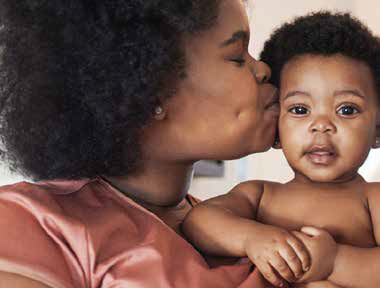
“We are pleased to announce that we have extended our option selection change period to 15 March 2020 for all members wishing to switch to the Emerald Value Option. The extension period will further give members enough time to evaluate their healthcare needs and make the right choice before the closing date.” says Phumelela Dhlomo, Chief Marketing Officer.
Members switching to Emerald Value Option and prospective members will enjoy the same rich benefits as the existing Emerald option, but at a more affordable rate, such as:
- Comprehensive in-and-out-of-hospital cover;
- Members nominate a network General Practitioner (GP) as their first-line when seeking medical care and who they will consult for all their doctor visits;
- Specialist referral must be obtained from member’s nominated GP for all specialist consultations; and
- Members must use a hospital from the GEMS Hospital Network for all in-hospital needs.

The other good news for public service employees is that GEMS has changed the name of the Sapphire option which is now called Tanzanite One with bigger, better and richer benefits. Tanzanite One symbolises an evolution of the Basic Benefit Package and transformation which forms part of GEMS’ business strategy that seeks to ensure more value for members. Tanzanite One members will enjoy:
- Comprehensive in-hospital and out-of-hospital cover;
- Public service employees on salary levels 1 – 5 may enjoy up to 100% subsidy from their employer. This means they could be getting so much more without paying a single cent!
- Members will now have access to a network of healthcare providers by nominating a GP of their choice to coordinate their healthcare needs;
- Access to the GEMS Hospital Network;
- Using hospitals on the GEMS network means members will not experience out of pocket payments – allowing them to really do more for their families;
- Unlimited GP and specialist consultations; and
- Access to Over-The-Counter (OTC) medicine.
Dial *134*20018# or 0860 00 4367 to make the switch today. For more information on the benefit enhancements for 2020, contact GEMS using one of the following channels: contact centre: 0860 00 4367, email: enquiries@gems.gov.za or visit: www.gems.gov.za.
Working towards a healthier you
Hani name held high by Youth Ambassador
Hani name held high by Youth Ambassador SiboneloNosipho Hani Khumalo (21) is making a positive impact in her role as a National Youth Ambassador.
 Khumalo, a medical student at Sefako Makgatho Health Sciences University in Tshwane, was elected as National Youth Ambassador for South Africa through Youth Service America (YSA).
Khumalo, a medical student at Sefako Makgatho Health Sciences University in Tshwane, was elected as National Youth Ambassador for South Africa through Youth Service America (YSA).
YSA delivers training and empowerment to youth around the world. These young leaders meet annually to brainstorm ways to uplift the youth.
Khumalo sent her CV to YSA, outlining her plans to make a difference for South Africa’s youth.
“My application was successful and I was chosen to represent South Africa. I was elected because there was no youth ambassador to deal with the youth’s problems and help government come up with solutions,” said Khumalo.
She explained that her main focus is to increase youth employment and create opportunities for them.
“Due to the high rates of unemployment, youth are forced to give up their passions and get a job to survive. I believe we should be able to make and sustain a living beyond academics. Those in art, sport and entrepreneurship are just as important. All we need is resources. This is the main difference I want to make, to eradicate unemployment through entrepreneurship,” said Khumalo.
Khumalo is passionate about sport, which led to her becoming the first black and first female president of University Sports South Africa, the controlling body for all sport played at a tertiary level in the country.
“This is a great honour for me. It’s like growing the fruits that the likes of my grandfather planted. It shows great progress in our country and I feel honoured to uplift women, especially black women, in leadership.” Hani Khumalo is also the granddaughter of the late struggle stalwart Chris Hani.
She encourages the youth to work together to succeed.
“My brothers and sisters, we are a family and this country is our home. We need to work together to build our home."
Have your say on what your ward should look like
Have your say on what your ward should look like angenithaThe Municipal Demarcation Board (MDB) will soon embark on nationwide public consultations on the draft sets of electoral wards in preparation for next year’s local government elections.
Addressing the media recently, MDB board chairperson Thabo Manyoni said the consultative process - which will be held between February and April this year - reflects the board’s commitment to improve public participation in democratic processes.
“We therefore call on all members of the public to actively participate and express their views on how their wards should be configured,” said Manyoni.
As one of the core mandates of the organisation, Manyoni said the ward delimitation process is regarded as a crucial step towards deepening local democracy and promoting spatial transformation within communities.
The ward delimitation process entails the division of the whole geographic area of a municipality into smaller geographic areas, called wards.
The MDB delimits wards for the purpose of local elections after consultations with the (IEC). Wards are delimited in all metropolitan and local municipalities. This process is necessary to lay a solid foundation for the delivery of free and fair local government elections.
During the 2016 local government elections, there were 4 392 wards in the country. An additional 76 wards will bring the total number of wards to 4 468 for the 2021 local government elections.
Over the next three months, the MDB will visit all local and metropolitan municipalities across the country for consultations. In February, the board will be in the Eastern Cape, Mpumalanga, KwaZulu-Natal and Western Cape. The following month will see the board in Gauteng. The consultations will conclude in April in the Northern Cape, Free State, North West and Limpopo.
MDB deputy chairperson Mbali Myeni said the final wards will be announced in July.
“We should have the comfort of knowing that the process was transparent and decisions taken have, as far as possible, embraced inputs from our stakeholders and communities,” she said.
The final list of wards will then be handed over to the IEC in August 2020.
Myeni said it is important to indicate that the MDB has no influence in the determination of the formulae and the number of councillors in a municipality, and therefore cannot increase or reduce the number of councillors determined by Members of Executive Councils. SAnews.gov.za
For more information visit the MDB on www.demarcation.org.za.
Hotshots share their skills abroad
Hotshots share their skills abroad UrsulaSouth African government-funded programme Working on Fire (WoF) continues to grow from strength to strength, empowering local firefighters and even giving them a chance to work overseas. 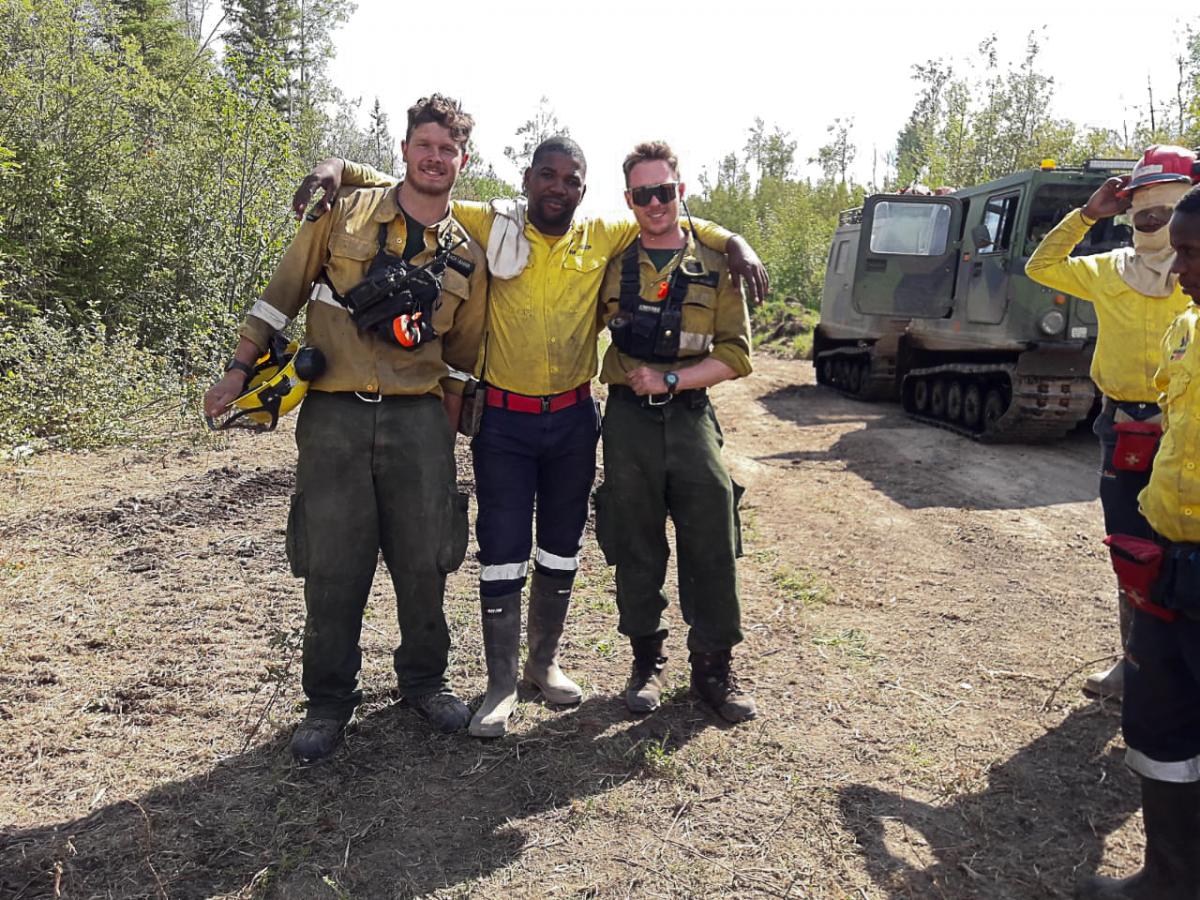
Since this successful Expanded Public Works Programme was established in 2003, its firefighters have been deployed overseas three times, to Indonesia and Canada.
Recently Canada made an urgent call for WoF’s assistance to put out a huge fire that was destroying thousands of hectares of land.
About 40 WoF firefighters were deployed to the country and spent almost 30 days battling the blaze.
For most of the crew – called the WoF Wolfpack Hotshots, this was the first time they had been overseas.
Tonic Mahlare (34) from Limpopo was one of the firefighters deployed to Canada.
“The firefighting was very different because it was an underground fire; in South Africa, we are used to fighting grass and ground fires. At one moment, you might be stepping right on the fire without even knowing about it, so it was a learning experience,” said Mahlare.
Mahlare began with WoF in 2011 and has since been promoted to a Crew Leader.
“WoF has given me many opportunities, including skills development and leadership skills. I would really encourage young people to become a firefighter, because it is not only about fighting fires, it is also helping the community by teaching them about the dangers of fire.”
WoF Managing Director Trevor Abrahams, who also joined the team in Canada, said that international deployments provide learning opportunities and work experience.
“The exposure to new techniques, approaches, equipment and the novelty of fighting underground fires have greatly enhanced the skills set of the South African WoF Hotshots team.”
Abrahams added that the firefighters also had the opportunity to experience Canada and its people and to share South African culture with their hosts.
“Their singing quickly became widely acclaimed, with the team regularly serenading firefighters who were celebrating their birthdays on the fire line,” said Abrahams, adding that the team made South Africa proud.
Narysec kick-starts lives of rural youth
Narysec kick-starts lives of rural youth angenithaThe Department of Rural Development and Land Reform’s (DRDLR) youth flagship training programme, the National Rural Youth Services Corps (Narysec), is set to transform the life of a young woman from a rural Limpopo village.
Sana Magwete (25), who lives near Mokopane, has been selected as a programme participant. She said she can now see a brighter future ahead of her.
“I am hoping to acquire skills that will enable me to be an entrepreneur. I would like to start a chicken abattoir because there is no such business in my village and people in my area love meat. I am almost certain that the business will succeed,” she said.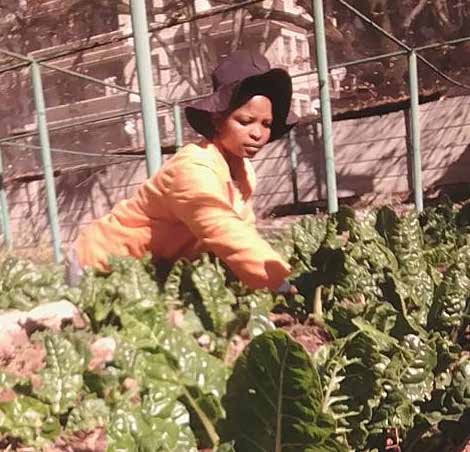
She said unemployment is very prevalent in her village. “There are no job opportunities for the youth. I am hoping that once I finish with the programme and get my business up and running, I will be able to create jobs for locals and also make a living for myself and my family members.”
Magwete said last year the village chief gathered the local youth to inform them about Narysec and the opportunities it offers.
“Fifteen young people, including myself, were selected from my village,” she said.
They are already at Narysec’s college in Thaba Nchu in the Free State, where they will spend four months before being deployed for training in different areas. During training, Magwete said they get a monthly stipend of R1 320 for the first four months, after which it will be increased to R3 000.
Skills for rural youth
Narysec is a 24-month skills development programme that targets unemployed rural youth.
Mamosweu Tsoabi (32) was part of the programme in 2010.
She learnt construction skills, including bricklaying, tiling and roofing. She was also shown how to build hydroponic tunnels, which has stood her in good stead,
Tsoabi, who was initially a farmworker, now owns a farm that produces lavender, basil and lemongrass, among other things. She said instead of outsourcing the building of structures at her 2.5-hectare farm in Sebokeng, she works with community members to build them.
“The people I work with sometimes don’t have the skills so I show them how things are done and once we are finished, they use those skills to build houses for others in the community,” Tsoabi said.
1 000 youth recruits
This year, DRDLR and the Department of Cooperative Governance and Traditional Affairs (Cogta) welcomed 1 000 new Narysec recruits.
At the event, it was explained that Narysec has been repurposed to help implement government’s new District Development Model (DDM), which aims to fast-track service delivery and economic development, including job creation. The initiative is overseen by Cogta. Consequently, Narysec’s strategic focus is now on identifying exit pathway opportunities before recruitment.
Addressing this year’s recruits, DRDLR Minister Thoko Didiza said for the country to develop, young people must take responsibility for bettering their lives.
How to apply to join Narysec
Since the start of the programme in 2010, over 11 000 young people from across the country have been trained in nature conservation, artisanry, plumbing, electrical engineering, office administration, building and construction, among others.
Those looking to apply to the programme must be:
- between 18 and 25 years
- in possession of a Grade 12 certificate
- unemployed
- from a disadvantaged family
- residing in a rural area
- prepared to do community service
- interested in joining the agriculture sector.
In addition, they should not have a criminal record and should currently not be doing tertiary studies.
Applicants are also required to write an essay in their home language, stating what positive contribution they will make to their communities with the skills gained from the programme.
Application forms are available at the local DRDLR offices or municipalities.
The DDM in a nutshell
The DDM was inspired by government’s Khawuleza (hurry up) call to action. It aims to accelerate, align and integrate service delivery under a single development plan and includes 44 district and eight metropolitan municipalities.
The district plan will ensure that national priorities such as economic growth and employment; improvements to living conditions; the fight against crime and corruption and better education outcomes are attended to in the locality concerned.
This development approach ensures that planning and spending are integrated across the three spheres
of government.
Perseverance brings home the bacon
Perseverance brings home the bacon tsoanaWhen teacher Mapula Rampedi realised 20 years ago that she was not making ends meet on her salary, she looked to her childhood for a solution.
The daughter of a small-scale farmer who raised pigs and grew crops, and vegetables recalled how agriculture gave her parents the means to raise five children and fund their tertiary studies.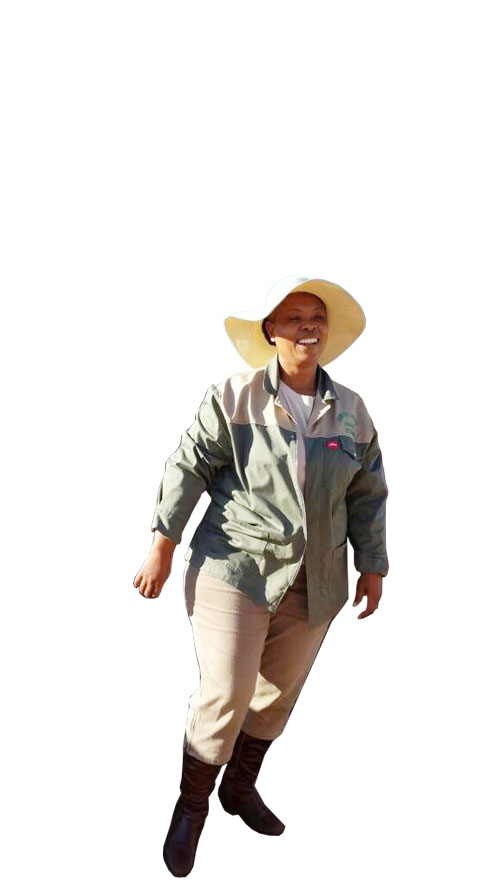
She resigned from teaching and started a piggery. The first 10 years were challenging and she was unable to make enough of a profit to sustain operations. Determined not to quit, however, she went back to teaching for a year in 2010 and invested as much of her salary as she could into her business, which she officially registered in that year.
Today, at 54 years of age, she is a successful farmer. Rampedi’s determination enabled her to bring the farm she and her siblings had abandoned back to life and she once again takes pride in the land on which she was born and bred.
Her hard work was recognised by the Department of Rural Development and Land Reform, which gave her a five-ton customised delivery truck, 40 pigs and feed in 2018.
Rampedi Farming is a preferred supplier of pork in Limpopo. It supplies around 20 pigs a week to local butcheries and farms, sells breeding stock to the University of Limpopo and supplies meat to shisanyamas and community members in the Blouberg Municipality in Limpopo.
Rampedi, who has created seven jobs, hopes her farm will grow and positively contribute to the economy by creating sustainable jobs.
“This can only be possible once I become a commercial farmer. I am trying to secure a farm of my own so that I can become commercialised. I would also love to export products to other countries,” she said.
She believes agriculture is a vehicle that can be used to eradicate unemployment within communities and to end poverty .
SA activates Coronavirus emergency operations centre
SA activates Coronavirus emergency operations centre SiboneloThe Health Department has activated an emergency operations centre to deal with the global outbreak of the Coronavirus.
“The emergency centre was activated recently and is now currently operational. We are busy building up the staff numbers.” said Health Minister Zweli Mkhize as he detailed the country’s response to the outbreak recently.
This follows the declaration by the World Health Organisation (WHO) of the Coronavirus as a Public Health Emergency of International Concern (PHEIC). The declaration comes in the wake of a 170 people losing their lives to the virus that was first identified in Wuhan City, in the Hubei Province of China.
The WHO first became aware of the respiratory disease of unknown cause on 31 December 2019. On 7 January 2020, a positive pathogen was identified which is known as the Novel Coronavirus (2019-nCoV).
Activation of the operations centre on South African shores means that there are dedicated staff working exclusively on the Coronavirus.
In addition to the operations centre, the department announced the following hospitals as centres for isolation and treatment of people infected with Coronavirus:
- Polokwane Hospital in Limpopo
- Rob Ferreira Hospital in Mpumalanga
- Charlotte Maxeke Hospital, Steve Biko Hospital and Tembisa Hospitals in Gauteng
- Grace Hospital in KwaZulu-Natal
- Klerksdorp Hospital in the North West
- Kimberly Hospital in the Northern Cape
- Pelonomi Hospital in the Free State
- Livingstone Hospital in the Eastern Cape
- Tygerberg Hospital in the Western Cape
“These centres have been chosen for their ability to isolate, manage, contain and conduct research on suspected or confirmed cases of Coronavirus.
“This by no means suggests that other facilities do not have the ability to manage a suspected case that presents for the first time. It is simply a mechanism to ensure that we can centralise coordination and data collection.
“Every hospital should be able to manage it and then move them on to where we treat them centrally,” said the Minister.
Mkhize said the 24-hotline set up at the NICD to field questions from clinicians on the outbreak has also experienced high call volumes - demonstrating a high vigilance among healthcare workers.
“You will understand that when you have a situation of this nature even ordinary flu is treated with suspicion. We actually expect that just out of vigilance the number of people calling will increase. We believe that it is better to always over suspect than under diagnose,” he said.
SA beefs up surveillance at ports
Apart from digital thermal screeners, port health officials have also been provided with additional hand held thermometers to detect the temperature of any traveller arriving into the country.
The Health Department has also requested support from the South African Military Health Services to boost manpower at the various ports of entry where additional support is needed.
About the Coronavirus
The Coronavirus is zoonotic, meaning it is transmitted between animals and people.
Symptoms of the virus include fever, cough, shortness of breath and breathing difficulties. In more severe cases, infection can cause pneumonia, severe acute respiratory syndrome, kidney failure and even death.
There is no specific antiviral treatment of the virus. Treatment remains supportive and there is no vaccine for the virus. – SAnews.gov.za
Safety first
Safety first SiboneloPublic schools have a legal and moral obligation to ensure they meet government’s Regulations for Safety Measures at all Public Schools.
Parents often struggle to watch their children set off on a school bus, whether they are going on a camp or tour or attending a sports event, as they know that they will not be there to protect them.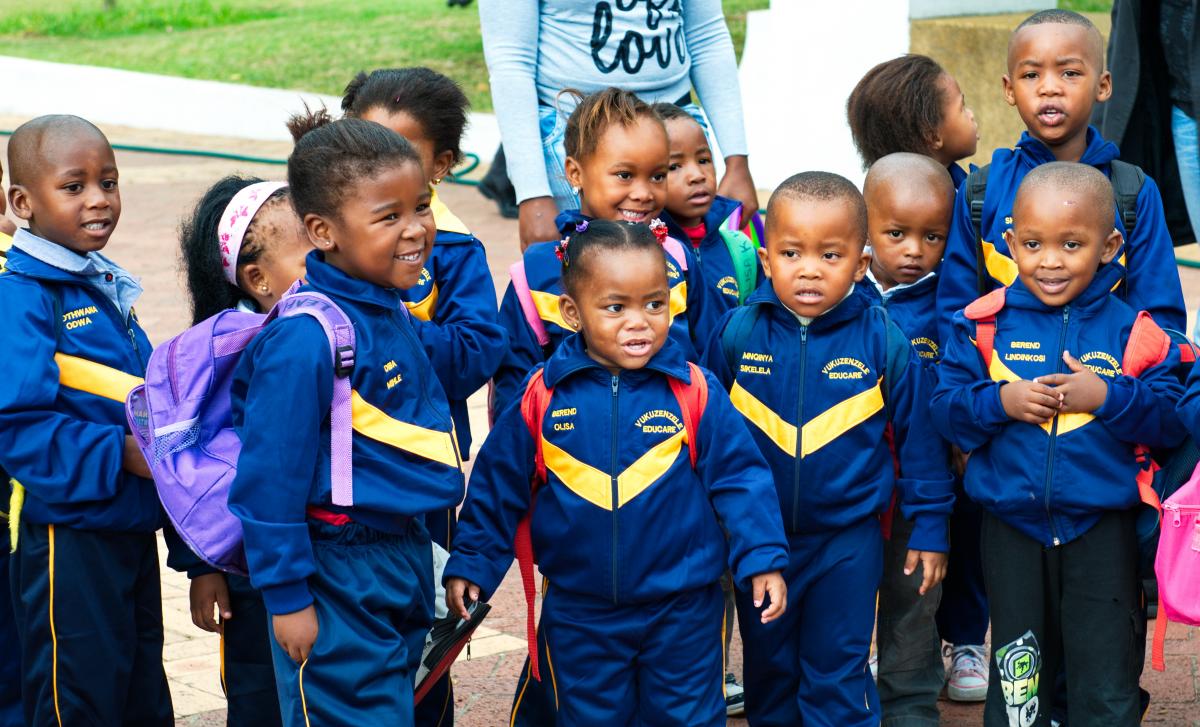
While allowing children to participate in events away from school fosters growth and independence, parents worry all the time, only feeling reassured when their children are safely back home.
The tragic death of 13-year-old Enock Mpianza, who drowned in the Crocodile River while attending a Grade Eight orientation camp in the North West in January, brought every parent’s worst nightmare to life. When the shocking news of Mpianza’s death hit the news, he wasn’t just someone’s child, he was everyone’s child.
Safety measures at public schools
The regulations relating to safety measures at public schools, in Section 61 of the South African Schools Act, 1996, focuses on the safety of learners while in a school’s care.
In terms of Section 15 of the South African Schools Act, No 84 of 1996, a public school is a juristic person, with legal capacity to perform its functions in terms of the Act. By implication, a school is not restricted to its buildings and premises. Learners who undertake a school tour are believed to be at school and, therefore, the regulations for safety measures at public schools apply to them as well.
A public school may not undertake any tour without the approval of the Department of Basic Education. An education official will consider applications for approval in cases where full details of the tour are given. The most important details relate to;
- the purpose of the tour
- names of learners undertaking the tour
- names of educators and governing body members accompanying the learners
- the type of transport to be used.
The regulations state that a public school must take measures to ensure the safety of learners during any school activity or tour, including insurance against accidents, injuries, general medical expenses and hospitalisation.
It also states that, where reasonably practical, learners should be under the supervision of an educator at all times, and that public schools should request parents or other adults to assist with learner supervision.
Parental consent required
A public school must obtain written consent from a learner’s parents to take part in an activity or go on a tour, and it may not request a parent to sign an indemnity form that indemnifies the school against any legal action that may arise from these events.
When organising a school activity or tour, a public school must supply parents with;
- information about the purpose of the activity or tour
- nature of the activities to be undertaken
- full itinerary, with host and supervising educator contact details
- details about transport, accommodation and catering arrangements.
In addition, the school principal must ensure that learners are informed about the dangers of water and the safety measures that must be taken. This applies to any swimming or water sports activities in a swimming pool, river, dam or the ocean.
The principal must also ensure that learners are supervised during all swimming activities. If a public school has a swimming pool, the principal must also ensure that notices regarding safety are displayed around the pool.
Immediately after returning from a school activity or tour, the supervising educator must submit a report to the principal of any accident or injury to a learner, educator, driver or any other person.
A public school must also ensure that its vehicles for transporting learners are roadworthy and insured. Drivers have to have a valid driver’s licence and a professional driving permit.
Health concerns
If a learner has a doctor’s prescription for medication, the parents must provide the learner and the supervising educator with certified copies of the prescription. They must also notify the school, in writing, about their child’s medical condition. The principal must then provide the supervising educator with a file about the learner’s medical condition.
Parents should also be notified if their child will be travelling to or through a high-risk disease area.
A public school must also take reasonable measures to contact the parents for consent for medical treatment if a learner becomes ill or is injured during an activity or tour.
Information courtesy of the National Department of Basic Education.
Sibiya equals global maths teacher champ
Sibiya equals global maths teacher champ SiboneloKhangelani Sibiya’s unique approach to teaching mathematics and physical science earned him the 2019 Best Global Teacher Award in Dubai recently.
Sibiya (33) is the head of department for mathematics and physical science at Siphumelele Secondary School in Richards Bay, KwaZulu-Natal (KZN).
His teaching approach is to relate maths to real-life experiences.
“Mathematics is fun and that is why I use techniques such as composing songs when I teach. This helps learners recall the methods when they write tests,” he explained.
He said being recognised as the best teacher globally by the AKS Global Education network left him feeling honoured, humbled and grateful all at once.
AKS Global Education is an innovative training, technology, education management and research organisation that organises the Global Teacher Awards annually. The awards identify and recognise exceptional teachers who have made an outstanding contribution to their profession.
Sibiya has dedicated his life to promoting maths and science far and wide and has reached over 25 000 learners across the country through various initiatives.
When he was a second-year student at the University of Zululand in 2008, Sibiya established a non-profit organisation (NPO) called WTS Maths and Science Tutoring, which offers extra lessons in maths and science.
His NPO now has a website that allows learners from various parts of the country to access information about upcoming camps that he organises during school holidays.
“The next camp will be held from 23 to 29 March 2020 in Durban and learners from all provinces are welcome to attend,” he said.
Sibiya also conducts one-on-one after-school lessons in mathematics and physical science for learners in Richards Bay from Mondays to Thursdays; and in Emzingazi, Mtubatuba, eSikhawini, Eshowe, Empangeni, Durban and Pietermaritzburg from Fridays to Sundays. In addition, he provides maths and science support to schools in the region on request.
As passionate as he is about education, he would love to inspire other teachers to look at innovative new ways of getting through to learners and inspiring a love of maths and science in them.
WTS has WhatsApp groups for both teachers and learners and various support documents which can be downloaded for free from www.wtstutoring.org. Call 082 672 7928 for more information.
Teenager escapes ukuthwala
Teenager escapes ukuthwala angenithaA teenager tells how her family’s attempt to force her to marry an older man has left her scared and traumatised.
Ukuthwala, the practice of abducting young girls and forcing them into marriage, with or without the consent of their parents, is still a sad reality in parts of South Africa.
A teenager from a rural Eastern Cape village was recently abducted twice by a man 10 years her senior, who tried to force her to marry him.
Asavela Moyaphi* (18) has been left traumatised. She explained that she is constantly on her guard and feels rejected by her family, who now shun her because of her refusal to marry the widower.
Fortunately, after her second abduction by the same man, she was rescued by the Hawks.
The teenager said she was locked up, beaten and raped and when she managed to escape, her parents sent her back to the man’s house. She again escaped, only to be abducted again.
“When they abducted me again, I managed to inform my dance instructor and a friend. After two days, the police came and asked me if I wanted to be there. I said no and they took me to a place of safety,” she said.
Ukuthwala - a grim reality
Child marriages are still a reality in the rural parts of the Eastern Cape and KwaZulu-Natal. The Khula Children’s Rights Organisation is at the forefront of rescuing children who are forced into marriage.
Working with the Hawks, the Department of Social Development, the House of Traditional Leaders and community activists, the non-profit organisation intervenes on behalf of children forced into marriage, said its director Petros Majola. Rescued children are sent to places of safety, where they receive counselling.
Majola said the prevalence of child marriages is still alarmingly high. “In one week, we along with the Hawks – rescued three young girls,” he said.
Ukuthwala is in violation of children’s rights and also the right to human dignity, the right to security and sexual reproductive rights.
* Not her real name.
Children forced into marriage can contact the police at 10 111 or Majola at 083 371 1667.
The ins and outs of ADHD and ADD
The ins and outs of ADHD and ADD tsoanaThere is help available for children who suffer from attention deficit and hyperactivity disorders.
If a child who suffers from attention deficit hyperactivity disorder (ADHD) or attention deficit disorder (ADD) is not treated, the conditions could have long-term negative impacts on their health.
This is according to Dr Khatija Jhazbhay, who heads up the Child and Adolescent Psychiatry Unit at Townhill H ospital in Pietermaritzburg, KwaZulu-Natal.
ospital in Pietermaritzburg, KwaZulu-Natal.
She explained that as adults, these children could be at an increased risk of other mental conditions, such as anxiety and depression, and could also misuse substances.
ADHD and ADD affect children’s academic progress and their behaviour could annoy others. Children could also be disliked, get into trouble and be prone to accidents.
“Each child’s circumstances are unique and developing, so it’s important to do a comprehensive clinical assessment to recognise other factors that could be impacting their development, as well as the strengths that can be built on to assist them to reach their full potential,” said Dr Jhazbhay.
She explained that ADHD and ADD are neurodevelopmental disorders that present with behavioural difficulties, such as inattention.
This shows in the form of:
- making careless mistakes
- not completing tasks
- losing things
- being easily distracted and forgetful
Examples of hyperactivity or impulsiveness include:
- fidgeting
- tapping hands or feet
- squirming in their seat
- blurting out answers and getting up when expected to remain seated.
“Symptoms present in two or more settings – at home, school, with friends or relatives or during other activities – and interfere with social, occupational or school functioning. Severe symptoms present before the age of 12 and must be present for at least six months.
Teachers are able to pick up behaviour difficulties and can refer a child for clinical assessment. There are treatment options that can be considered.
For information contact the Mental Health Information Line at 0800 567 567, the ADHD Helpline at 0800 55 44 33 or the South African Depression and Anxiety Group at 0800 456 789. You can also visit your doctor or local health facility.
The ups and downs of farming
The ups and downs of farming tsoanaA Mpumalanga emerging farmer is ploughing ahead, having already won a prestigious award and secured a substantial contract for her maize.
A young female maize farmer is taking giant leaps towards becoming a successful commercial farmer.
Njabulo Mbokane (24), the owner of a 200-hectare non-genetically modified organism yellow maize farm, was recently named the South African Breweries (SAB) and FarmSol Young Emerging Farmer of the Year.
The Ermelo-based farmer leases two farms; one in her hometown; where she grows crops, and the other in Lothair; where she raises sheep.
Despite only starting farming in 2016, Mbokane already has a year-on-year maize contract with SAB.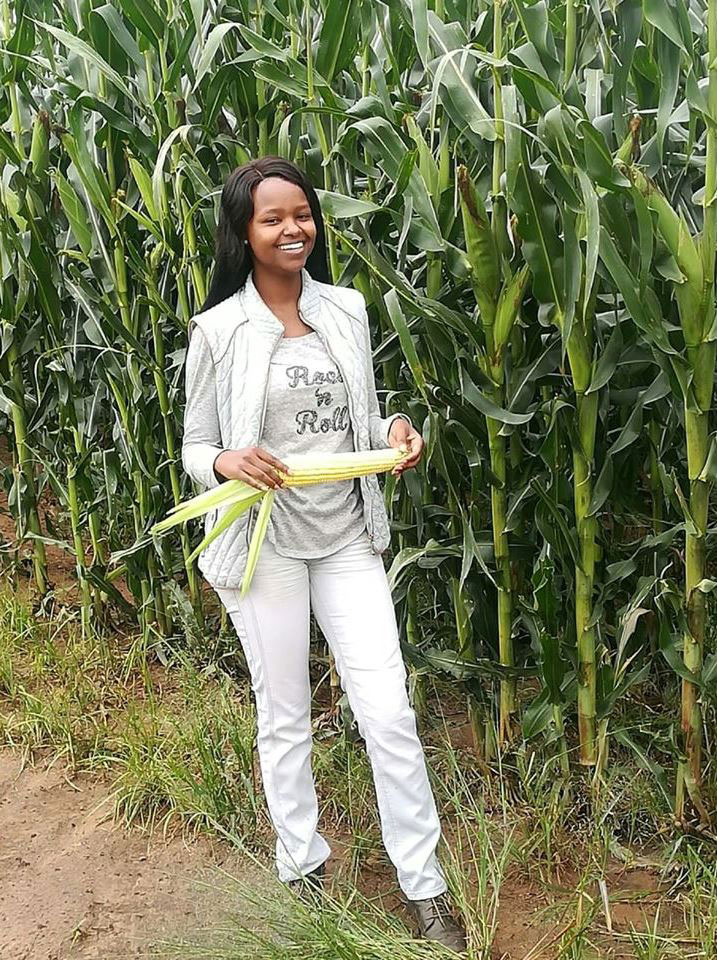
She is part of the FarmSol programme, which is an SAB Thrive Fund initiative aimed at funding Agri-SMMEs; providing technical training and support to emerging farmers; giving access to modern production inputs and patient financing to qualifying enterprises and enabling emerging farmers to find a route to market for their produce.
“FarmSol mentors us and helps us with training. It also assists us in taking samples of the maize and soil.” Mbokane was financially unable to study further after matric but knew that agriculture held many opportunities for people with the will to work hard.
“I started farming because I saw a gap that young people should explore and I went for it.”
Mbokane employs three permanent staff members and hires 15 seasonal employees during peak periods. She is looking to expand her operations to include cattle and vegetables once she has secured her own land and farming equipment.
Having her own tractors, for instance, will enable her to plant on time whereas with hired equipment, she can only plant when the tractor owner has finished his planting.
Mbokane started the farm with her mother’s pension payout and said that young people need not wait for a big break before making a start on their farming dream. “Start with the little that you have, even if it’s the garden in your backyard, and grow from there,” she said.
Vaccinate against Rift Valley Fever
Vaccinate against Rift Valley Fever tsoanaAlthough rain is a blessing for farmers, it can bring with it an increased risk of animal diseases.
Following the good rains that have recently fallen over parts of the country, the Department of Agriculture, Land Reform and Rural Development has warned that an increase in the number of mosquitoes that transmit Rift Valley Fever (RVF) can be expected.
RVF is a serious viral disease. Although it primarily affects animals, humans can also be infected. Signs to look for in animals include unexplained abortion and death, especially in young cattle, sheep and goats.
A widespread RVF outbreak last occurred in South Africa in 2010-2011. According to the National Institute for Communicable Diseases, over 14 000 animal cases and 278 human cases were rec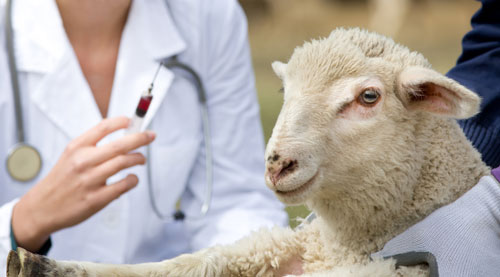 orded, of which 25 were fatal.
orded, of which 25 were fatal.
People can get infected if they come into contact with blood and other body fluids from infected animals, or if they assist with abortions and handle infectious aborted material, like foetuses, placentas and placental fluids.
It is critical that any suspected cases be immediately reported to the nearest State Veterinarian.
Signs and symptoms in humans
The illness is mild in the vast majority of infected persons, with severe cases occurring in less than one percent of infected persons.
- The incubation period (interval from infection to onset of symptoms) for RVF varies from two to six days.
- Symptoms include sudden onset of flu-like fever and/or muscle pain, possible neck stiffness, sensitivity to light, loss of appetite and vomiting.
- Symptoms of RVF usually last from four to seven days, after which time the immune response becomes detectable and the virus gradually disappears from the blood.
- Severe RVF symptoms in humans include vision disturbances, intense headaches, loss of memory, hallucinations, confusion, disorientation, vertigo, convulsions, lethargy and coma and haemorrhagic fever.
Cattle, sheep and goats must be vaccinated against RVF, especially in areas that have recently received good rainfall.
Live vaccine can only be used on non-pregnant animals as it can cause abortions. Dead/inactivated vaccine must be used on pregnant animals.
To enquire about disease control and how to keep your livestock healthy, contact Mariétta Bronkhorst at 012 319 7481 or email mariettaB@daff.gov.za.
*Information courtesy of the Department of Agriculture, Land Reform and Rural Development
Young skier waves SA flag high
Young skier waves SA flag high UrsulaAn Eastern Cape teenager is showing the country that despite its hot conditions, South Africa can produce skiing champions. 
Thabo Rateleki (17) of Barkly East in the Eastern Cape made South Africa proud when he qualified for the 2020 Winter Youth Olympic Games held in Lausanne, Switzerland, in January.
He and Hanle van der Merwe were the only two South Africans to compete in the Slalom and Giant Slalom events.
According to the South African Sports Confederation and Olympic Committee, Rateleki was the flagbearer at these games.
His achievements in alpine skiing competitions at national level include winning a gold medal in the Slalom discipline at the National Championships in 2018; and placing second in the Giant Slalom discipline and third in Slalom at the 2019 National Championships and National Junior Championships respectively.
These successes qualified him for the 2020 Winter Youth Olympic Games where he was the 39th person across the finish line.
Speaking to Vuk’uzenzele, he said he was excited to have finished the race at this prestigious event – which also marked the first time he had skied outside of South Africa.
Currently in Grade 10, his dream is to become a ski coach.
“I have always wanted to travel the world and to become one of South Africa’s champions. I am glad that my dreams are starting to come true,” he said.
Rateleki said his family is very supportive, explaining that his parents arranged for him to join the Ikhephu Ski Pups Junior Development Club at the Tiffindell Ski Resort in 2015. He is still a member.
He fell in love with snow as a youngster and was very excited to learn about Tiffindell, the only ski resort in sunny South Africa.
“I skied for the first time five years ago and I loved it. It was an awesome experience but a bit scary,” he said.
He loves sport in general and reckons that he is also talented in soccer and tennis.
His message to young people is that they should find what they love and dedicate themselves to the pursuit of excellence.